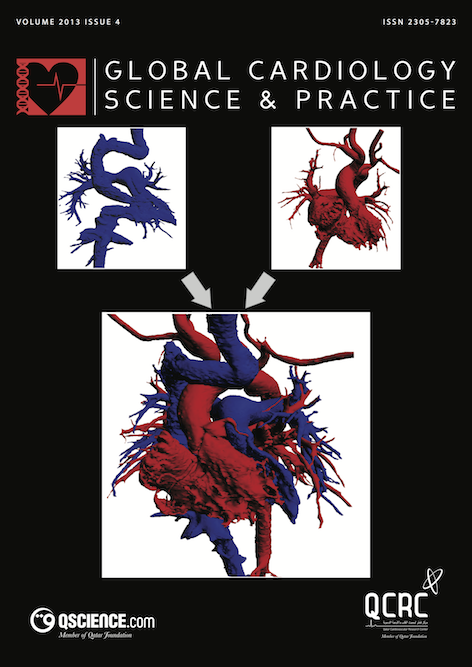Cardiac amyloidosis and hypertrophic cardiomyopathy: A dangerous liaison
Abstract
[first paragraph of article]
This is a case of a 50-year-old woman complaining of easy fatigability, anorexia and hypotension since 2009. She also reported alopecia, a 15 kg weight loss, and amenorrhea. A year after the beginning of the symptoms she sought medical attention: a diagnosis of nephrotic syndrome with proteinuria >10 g/L was made. A renal biopsy showed focal segmental glomerulosclerosis. Steroids and cyclosporin were then started. The patient did quite well until November 2011 when she was hospitalized for the recurrence of the symptoms. Because of persistent hypotension, Rituximab therapy instead of Bortezumib was instituted. At that time the ECG showed sinus rhythm with low QRS voltages and Q waves in the inferior leads and from V1 to V4. An echocardiogram showed severe symmetric left ventricular hypertrophy (21 mm of the interventricular septum and 20 mm of the posterior wall diastolic thickness). The left ventricular walls showed an inhomogeneous granular pattern. During systole, a virtual left ventricular cavity was evident with a left ventricular ejection fraction (LVEF) around 60%. A severe dynamic left ventricular outflow tract (LVOT) obstruction was present with a left ventricular- aortic gradient of 120 mmHg at rest and 250 mmHg during the Valsalva maneuver. Moderate mitral regurgitation with a systolic anterior motion (SAM) of the mitral valve was demonstrated. Severe diastolic dysfunction was present, with an E/E’ ratio of 12.3 cm/s.
Downloads
Published
Issue
Section
License
This is an open access article distributed under the terms of the Creative Commons Attribution license CC BY 4.0, which permits unrestricted use, distribution and reproduction in any medium, provided the original work is properly cited.


